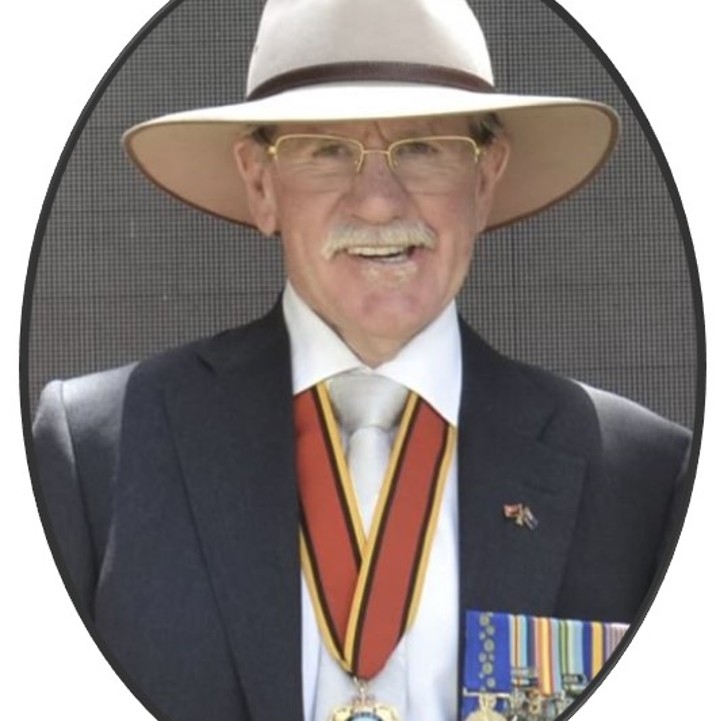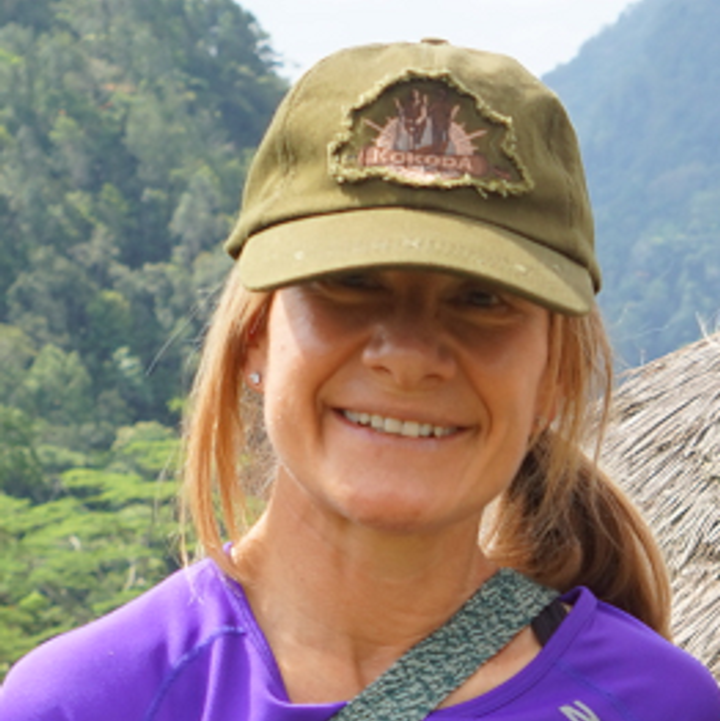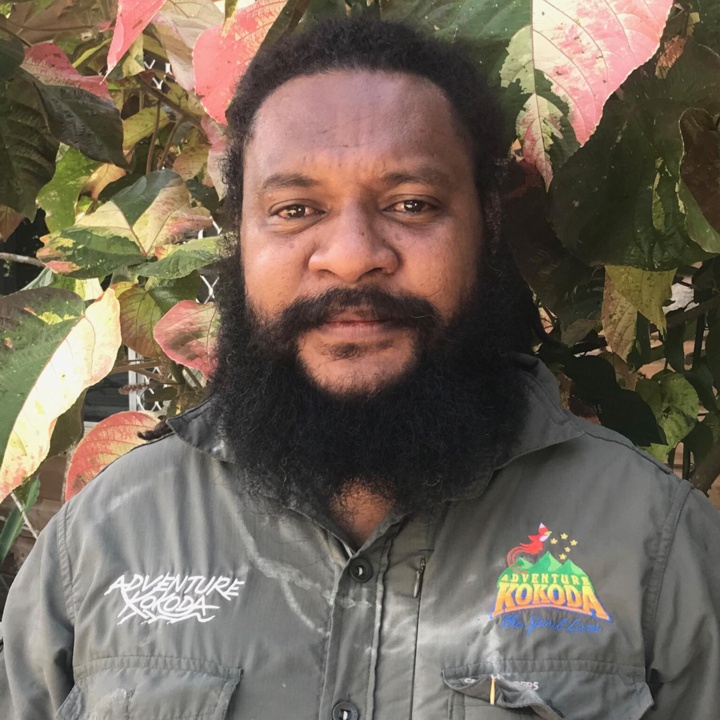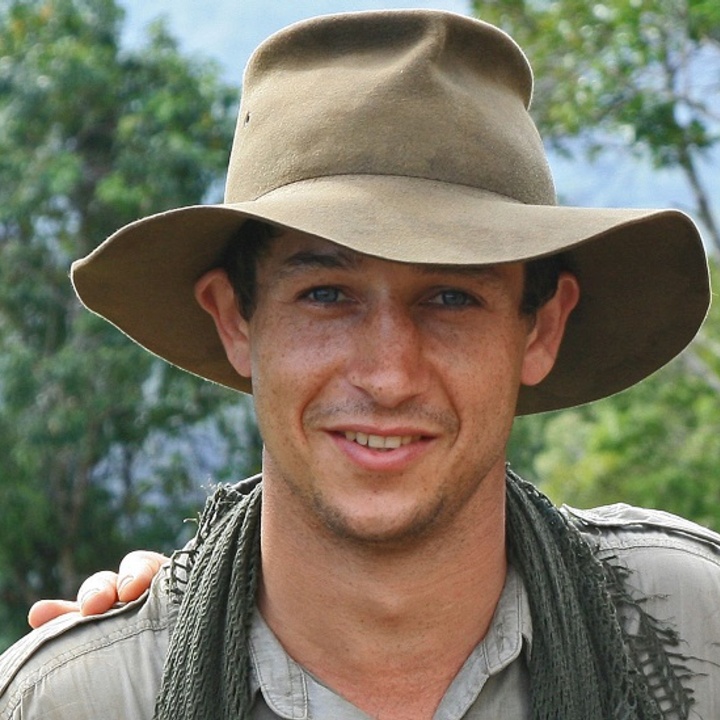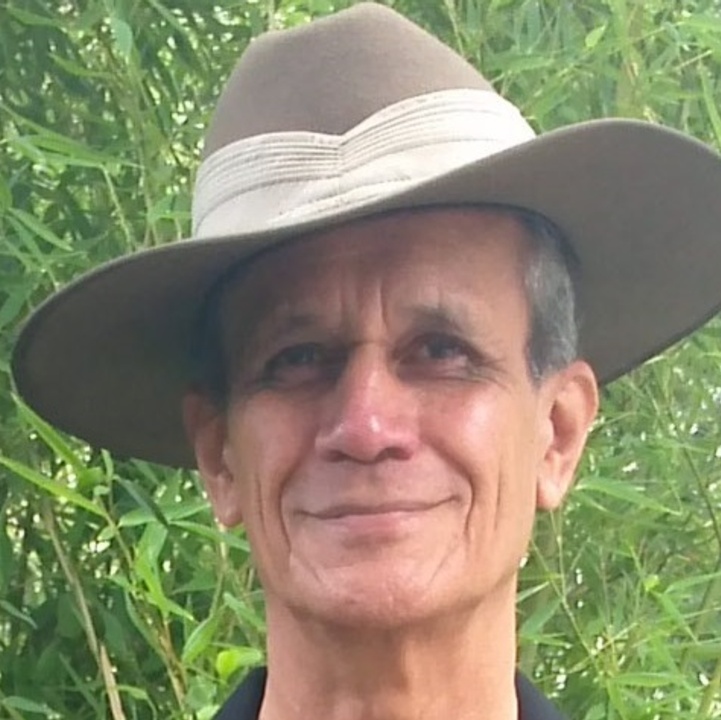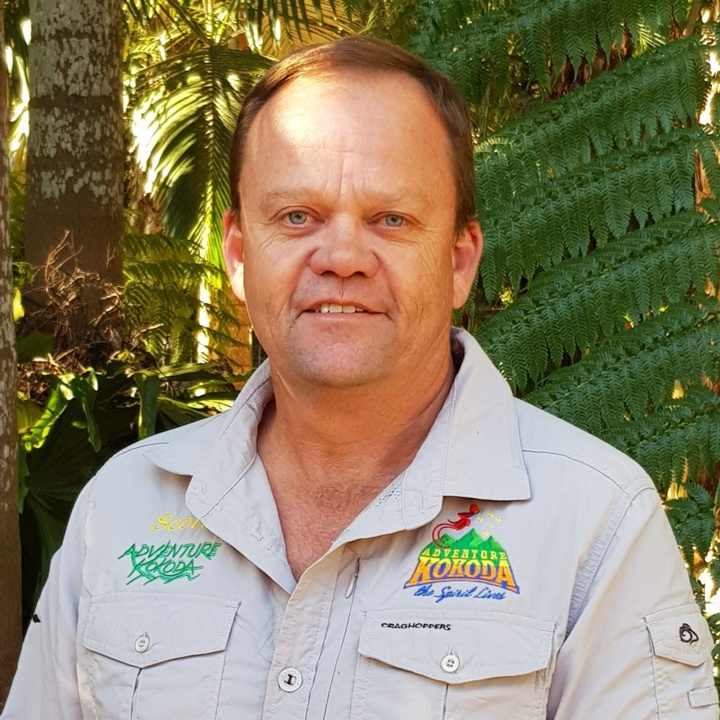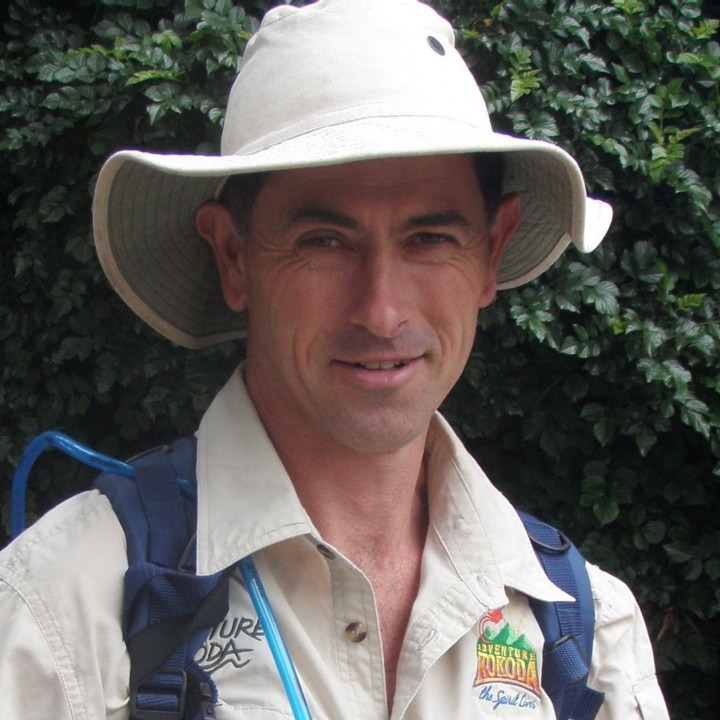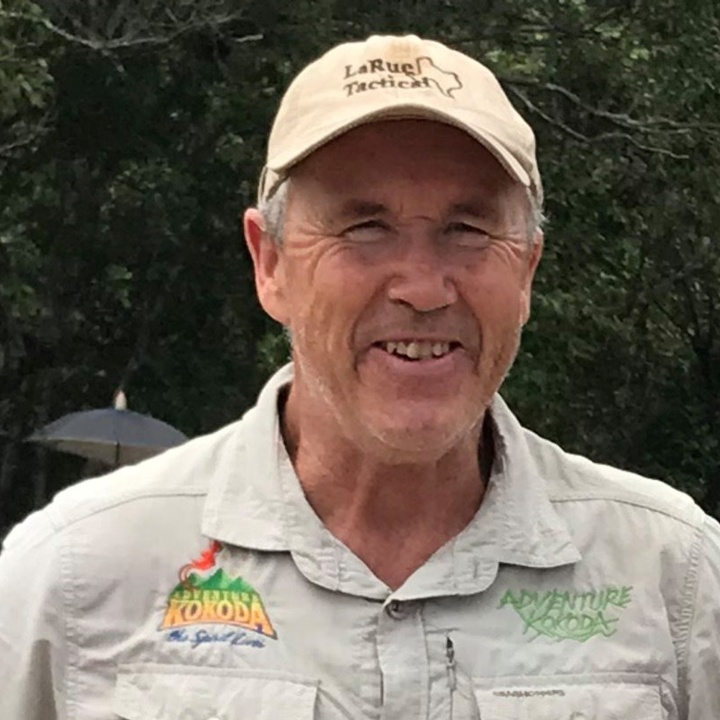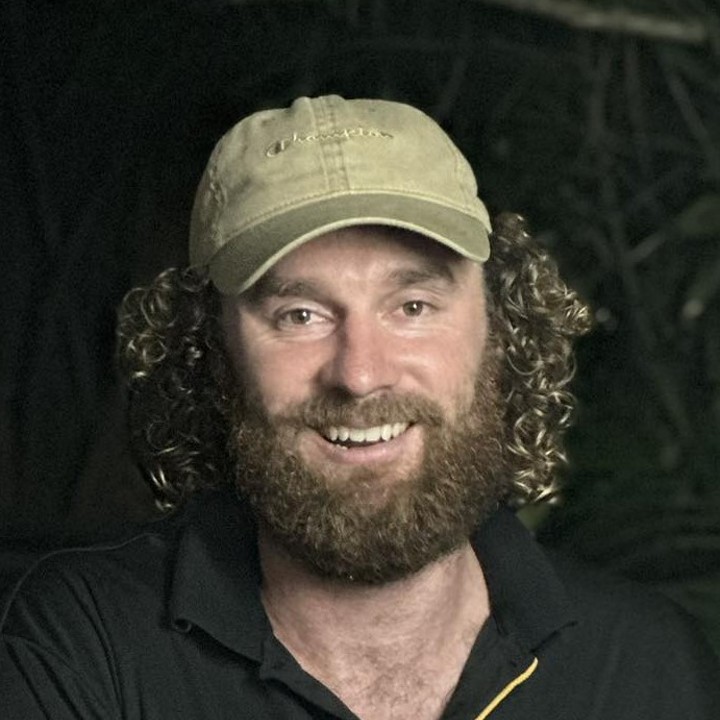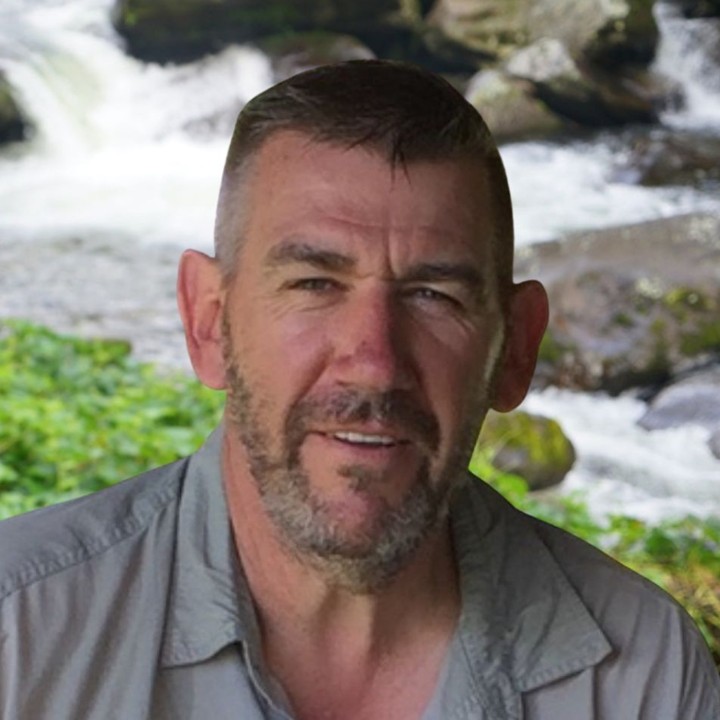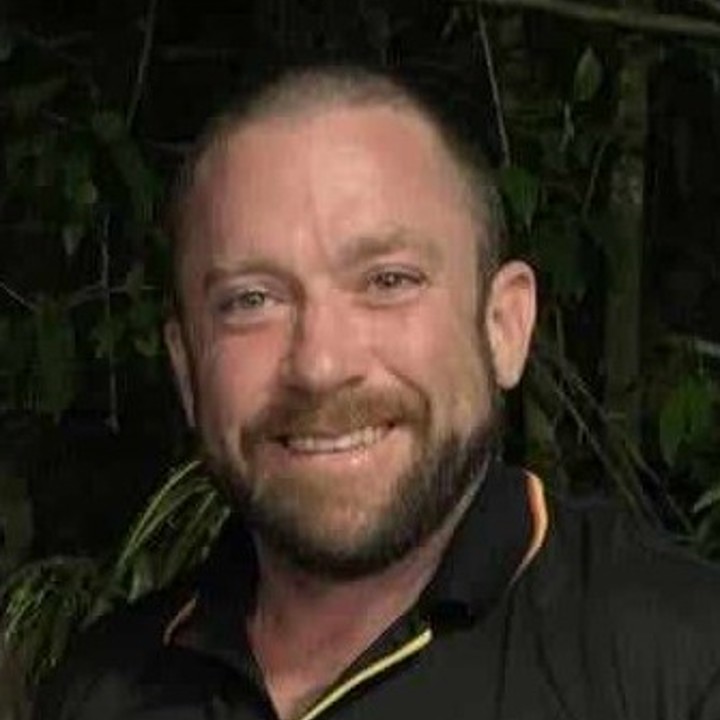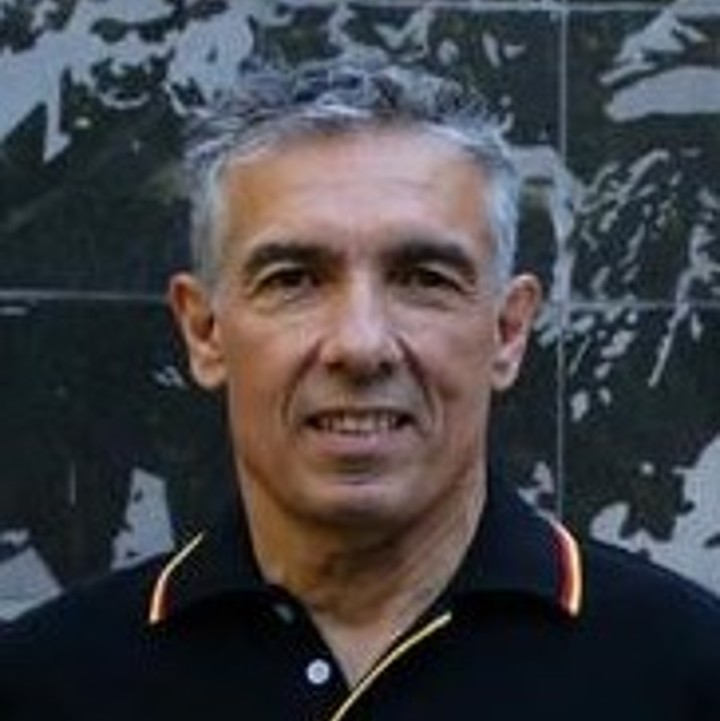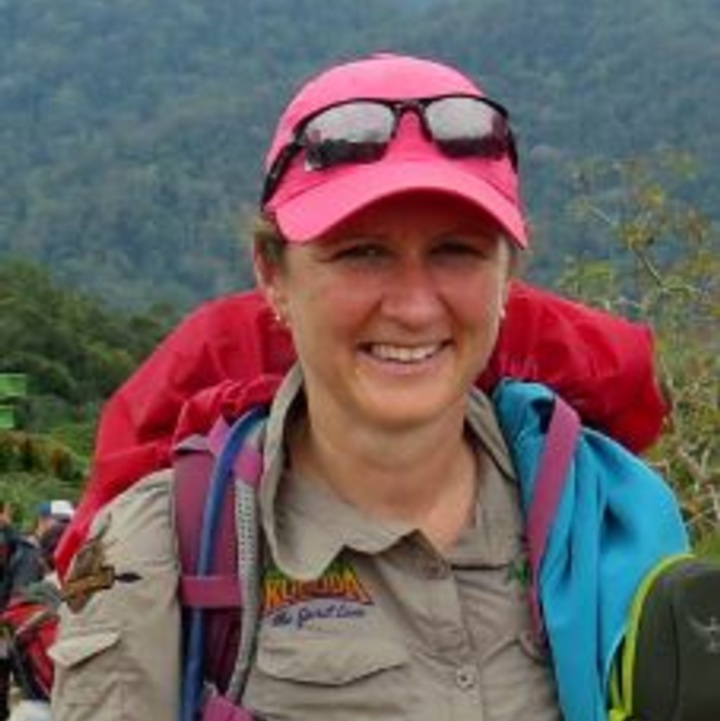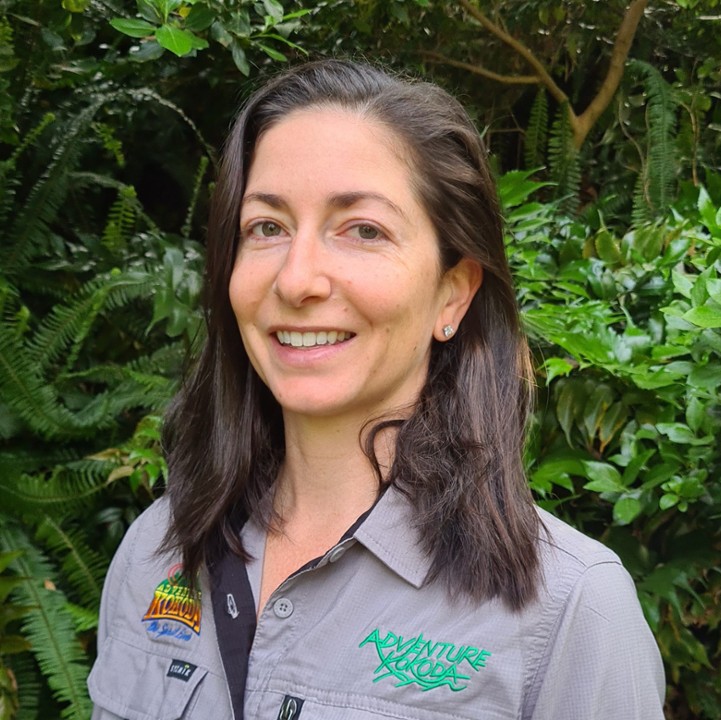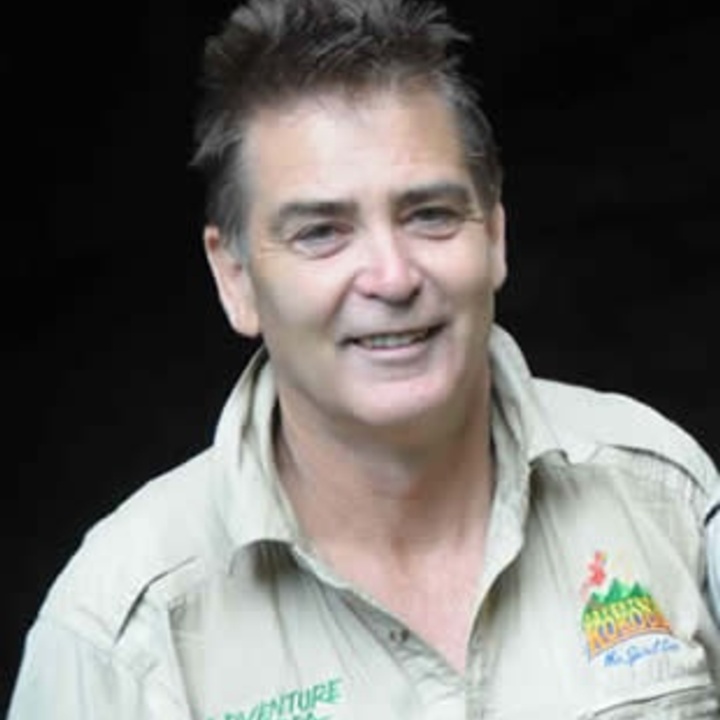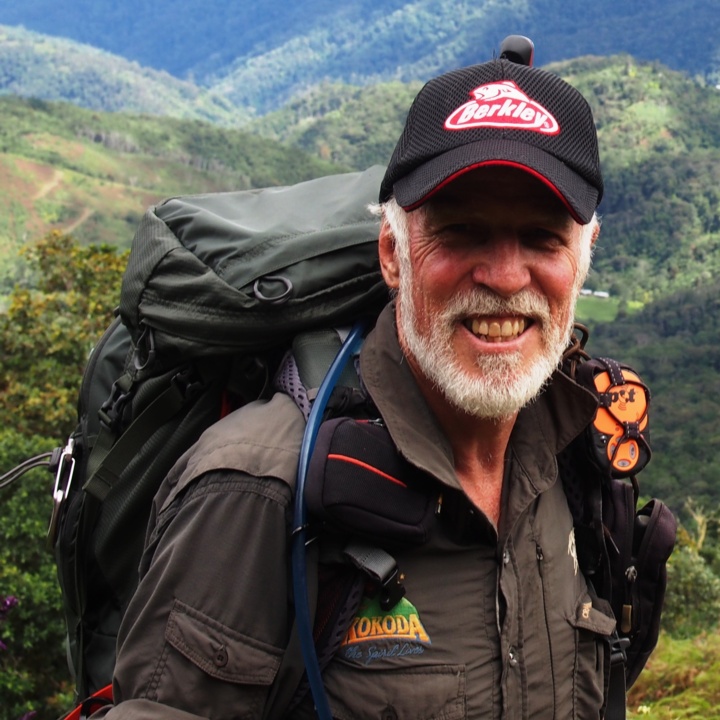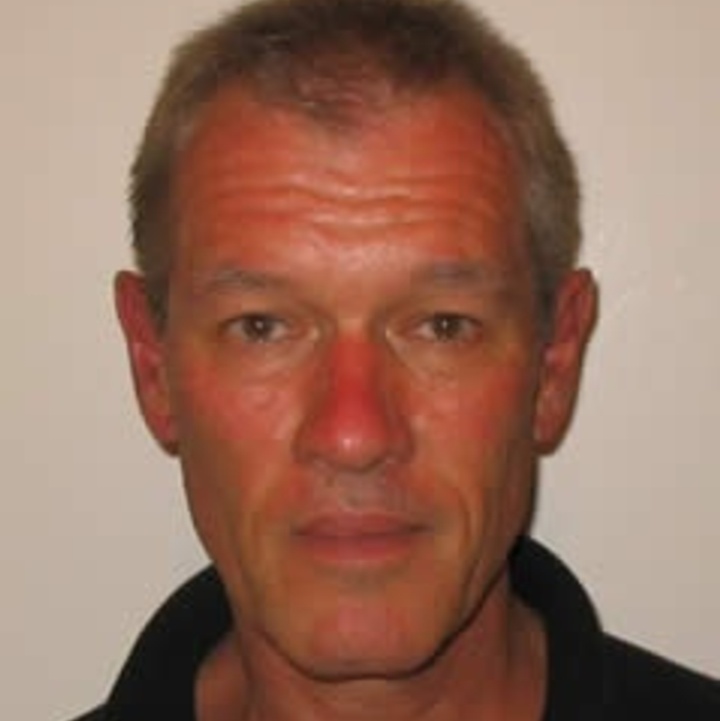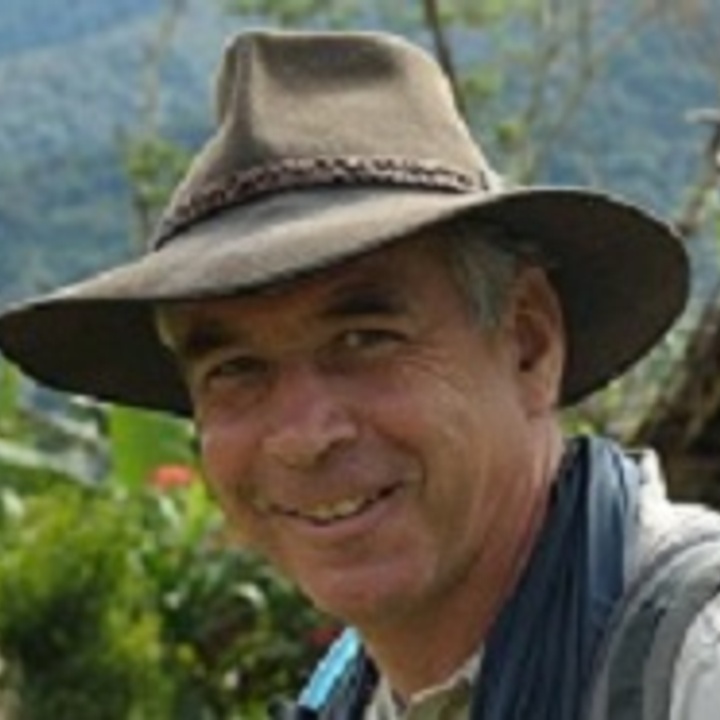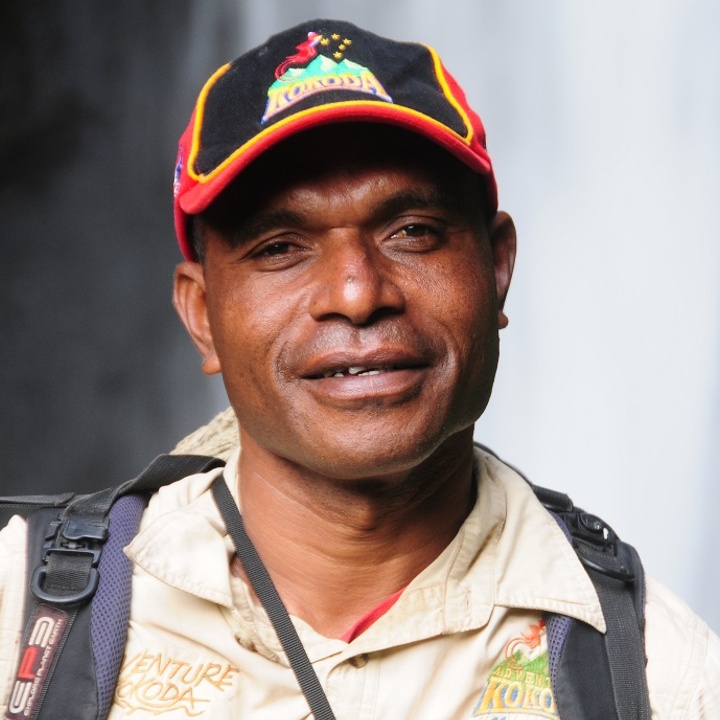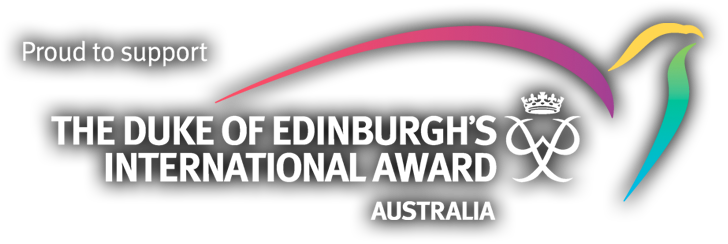
Our Kokoda Youth Leadership Challenge was voted as the most outstanding youth leadership program at the Clubs NSW Annual Awards Dinner in 2017.
More than 700 young Australians from all walks of life have graduated from this program over the past decade. According to the judges of the award this program is without peer in the development of personal leadership qualities based on the enduring values of Kokoda.
Other schools who have used our Kokoda pilgrimages for leadership development are Kings School, Parramatta; Riverina Anglican College, Wagga Wagga; combined schools from the Hills District in Sydney; Penrith Panthers on the Prowl; Canberra PCYC and Lomandra School, Campbelltown.
Our Kokoda pilgrimages for schools are based on lessons learned from our own experience as graduates of the army Officer Cadet School, the Royal Military College and the Australian Command and Staff College. We draw upon the experiences of our Adventure Kokoda trek leaders who have a combined total of 160 years professional military service that includes combat experience in Vietnam, Afghanistan and Iraq.
During their pilgrimage students are disconnected from the travails of social media and reconnect with themselves, their fellow trekkers, the environment, the culture of the Koiari and Orokaiva villagers along the trail, and the wartime history of the Kokoda campaign.
We de-clutter the theory of leadership and get back to basics in a physically challenging isolated foreign environment where risk is real, personal commitment is required and teamwork is essential. And no matter how hard the going gets we are constantly able to reflect on the difficulties our young troops had in fighting their way across the trail against all the odds in 1942.
We stress that the relevance of the Kokoda pilgrimage is not about the glorification of war - it's about the commemoration of sacrifice. It's also a realistic demonstration of the ability of the human spirit to conquer adversity.
But most of all It's about Australian leadership!
'the art of influencing and directing men to achieve an assigned goal in such a way as to obtain their obedience, confidence, respect and loyal co-operation'.
Essential military leadership characteristics include:
-
Loyalty:
faithfulness to country, corps and unit, and to your seniors and subordinates.
-
Sense of Honour
(Integrity): Uprightness of character and soundness of moral principles, absolute truthfulness and honesty; fairness and impartiality in exercising command. -
Sense of Responsibility:
Consistent endeavour to discharge the responsibilities accepted as an officer.
-
Knowledge:
Acquired information, including professional knowledge and an understanding of your men.
-
Courage:
A mental quality that recognises fear of danger or criticism, but enables a man to proceed in the face of it with calmness and firmness.
-
Initiative:
Seeing what has to be done, and commencing a course of action, even in the absence of orders.
-
Decisiveness:
Ability to reach decisions promptly and to announce them in a clear, forceful manner.
-
Tact:
The ability to deal with others without creating offence, and show respect for individuals
. -
Dependability:
The certainty of the proper performance of duty.
-
Endurance: The mental and physical stamina measured by the ability to stand pain, fatigue, distress and hardship.
-
Enthusiasm:
The display of sincere interest and exuberance in the performance of duty.
-
Unselfishness:
Avoidance of providing for one's comfort and personal advancement at the expense of others.
-
Bearing:
Creating a favourable impression in carriage, appearance and personal conduct at all times.
The Aims of Military Leadership are:
- Primary Aim: Accomplishment of the mission.
- Secondary Aim: Welfare of the men.
Military Leadership Principles are guides for the proper exercise of command:
- Be technically and tactically proficient.
- Know yourself and seek self-improvement.
- Know your men and lookout for their welfare.
- Keep your men informed.
- Set the example by deeds, not words.
- Ensure that the task is understood, supervised and accomplished.
- Train your men as a team.
- Make sound and timely decisions.
- Develop a sense of responsibility amongs subordinates.
- Employ your command in accordance with its capabilities.
- Seek responsibility and take responsibility for your actions.
- Make the primary mission the combat efficiency of your command.
Military Leadership Techniques are actions given by the leader. Each technique should:
- Be guided by the leadership principles.
- Exhibit the characteristics of a leader.
- Be consistent with the situation.
- Contribute towards achieving the goal.
Combat Efficiency was described as the ability of the unit to accomplish an assigned mission in the shortest possible time with the minimum loss of life and waste of material.
Indications of Military Leadership are:
- Morale:
an attitude of confidence in the mind of an individual when he identifies himself with a group, accepts group goals and works hard to achieve them.
- Discipline:
the prompt obedience to orders and, in the absence of orders, the initiation of appropriate action.
- Esprit De Corps:
the loyalty to, pride in, and enthusiasm for a unit shown by the members of that unit.
- Proficiency:
the technical, tactical and physical ability to do a job well.
Some 50 years on the gender of our language has changed but the principles and techniques remain the same.
By day 5 . . .
'The years I spent in war were the happiest I ever spent. I shared a task with men of every type and every social station and was admitted to a fellowship so rare as to almost justify the beastliness that made it possible. There is this to be said of war: you live simply if at all, and you do it in the company of men at their very best, spurred to a passionate unselfishness by a common purpose which at all other times is lacking'.
Around the campfire our trek leaders will discuss the '3+1 Rules of Survival' and various theories of leadership based on our own experiences: the army 'Group' theory based on the premise that he or she who wears the rank is not necessarily the leader; 'Command' leadership relevant to combat situations; 'Situational Leadership' which is the ability to shift behaviour according to the demands of the situation. We discuss the characteristics of effective team leadership which encompasses the natural mix of decisive action people, thinkers and carers.
By this stage the group are no longer strangers and are beginning to develop strong bonds of friendship. They now have an appreciation of the term 'Esprit de Corps' which wartime historian, Dudley McCarthy, attributed to another young group of strangers, the 39th Militia Battalion:
'Although possessing no permanent site, having neither roof nor walls, no unchanging form, it yet becomes home for those who serve in it. Away from it, each of its members can revert to being homeless individuals, lost uncertain, without proper identity. Because of this it calls to life in a man, rounded into fullness through shared battle, suffering and death, each other will always feel some sense of brotherhood for each other man of his battalion. Through this thing the strong lift the weak to efforts and achievements beyond their own strength and their conscious wills, and the dependence of the weak gives greater strength and endurance to the strong. For every individual human part of this battalion who is killed, this thing changes something in those who survive and calls to life something new that never was there before'.
Students then retire to think about a leader who has inspired them in their lives thus far - a parent, a teacher, a coach, a friend. Later in the day they return to the group and tell us about that person and the values they have and the qualities they exhibit that inspires them as a role model.
We then share a view on leadership from an old mentor:
‘From long experience I have learned the importance of knowing the capacities of my people. I view each person as an individual with strong and weak points. I have considered opinion about the strengths and limitations of each person and the responsibilities each will probably be able to handle best. In a general way I know when it will be safe to let a person ‘have his or her lead’ and when to ‘tighten the reins’. I consider it is part of my job to provide conditions that will allow my people to perform at their best.
‘I have learned to watch for signs that a person may be reaching breaking point, particularly during prolonged periods of stress. When I sense a person to be reaching breaking point I arrange for their relief as tactfully as possible.
‘I follow the practice of pushing decision making as far down the organization as it should reasonably go. For example, I give most of the problems that come to my desk to people who I think should handle them. Usually I do not comment on these problems in advance even though I usually have my ideas on how they should work.
‘I try to avoid making commitments that involve my people without their knowledge. I recognize it is tempting to promise people they will get everything they ask for. Instead I take note and promise that their request will be looked into, and that they will get it unless a good reason exists.
‘I have learned to be especially careful in one aspect of my actions. I have found that people are highly sensitive to anything a boss says or does. I have found that even the most vague speculations about possible actions can cause my entire organization to shift into high gear. Accordingly, I learned long ago not to throw off any chance remarks which might be construed to be subtle directives.
‘Despite my calculated reserve I am constantly tempted to tell employees how things should be done. I have a reputation for getting to the root of problems and, of course, I like seeing things done according to my own preferences. However, I am convinced that much of my effectiveness depends upon resisting this temptation. I have found that this restraint has resulted in my people getting high satisfaction from their own jobs. I believe that this is also why I have developed a reputation for always having my people ‘behind me’.
‘I have learned to use my people as a team. I encourage ideas and suggestions from everyone concerned, not only by saying so, but also by making sure that those who ‘stick their necks out’ do not feel threatened by their or others’; comments.
‘I insist that my people clear their ideas with each other before coming to me. I recognize that most problems will involve the activities of more than one branch or section.
‘I am concerned about the development of my entire organization and I make effort in this direction. I make it a specific responsibility of supervisors to bring on their employees. I encourage supervisors, for example, to invite selected employees to conferences where the latter can make a contribution or learn something relevant to their own work.
‘I believe that written directions or memoranda are most useful when they summarize or record concepts that have already been discussed.
‘I have found that the idea within which employees can act on their own initiative needs defining. I therefore keep in touch with my people so that I can show them where they are in over their heads. I don’t hesitate to tell them when they have failed – I do so plainly but in a way which stresses how such mistakes can be avoided in the future and how they can profit from them.’
What's included
- Meals
- All transportation
- All accommodation
- All trek fees
- Mosquito-proof tents
Trek Itinerary
- Day 1: Flight to Port Moresby
- Day 2: Sogeri - Owers Corner - Imita Base
- Day 3: Imita Base to Ofi Creek
- Day 4: Ofi Creek to Agulogo Creek
- Day 5: Agulogo Creek to Efogi Village
- Day 6: Efogi Village to Bomber's Campsite
- Day 8: Bomber's Campsite to Templeton's Crossing
- Day 7: Explore Lake Myola from Bomber's Campsite
- Day 9: Templeton's Crossing to Isurava via Abuari Village
- Day 10: Isurava to Hoi Village
- Day 11: Hoi Village - Kokoda - Bomana War Cemetery - Hotel
- Day 12: Return flight to Australia
Dates & Availability for Kokoda Pilgrimages for Schools
Photos from the Kokoda Pilgrimages for Schools
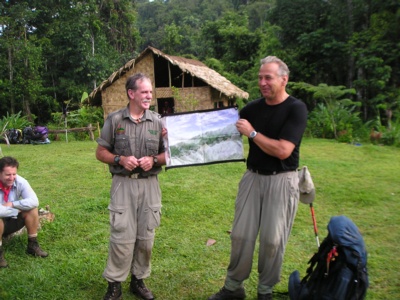
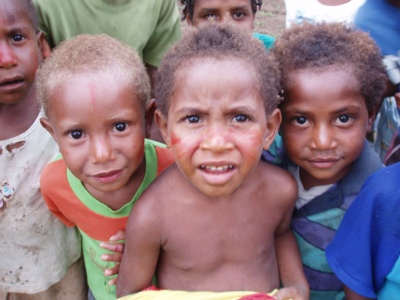
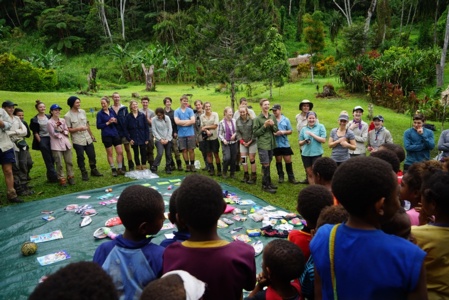
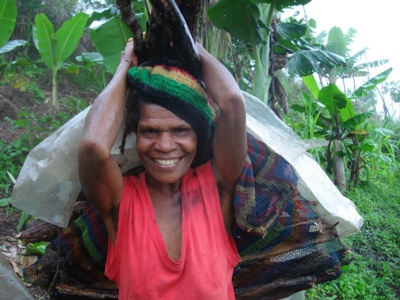
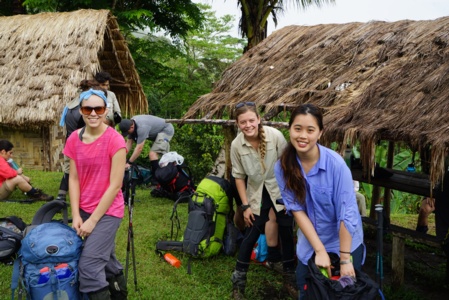
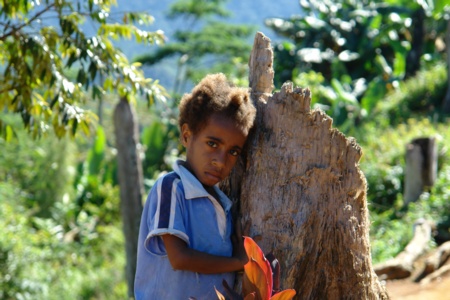
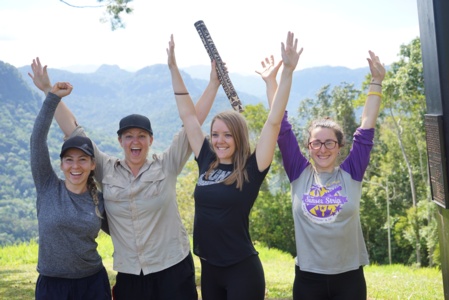
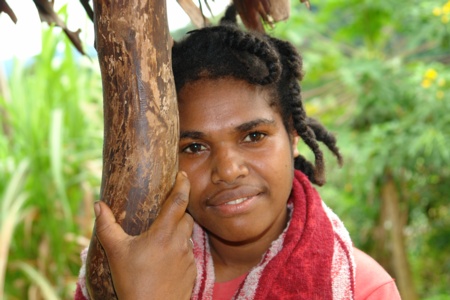
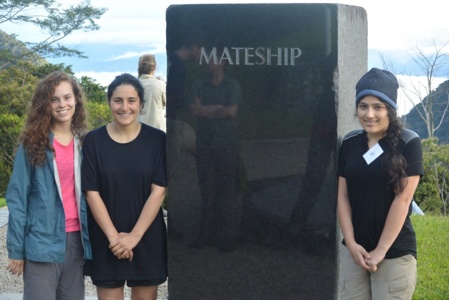
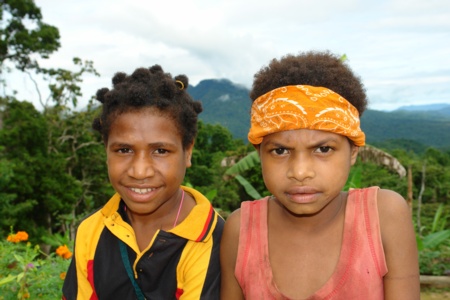
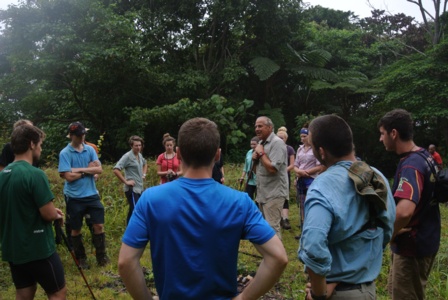
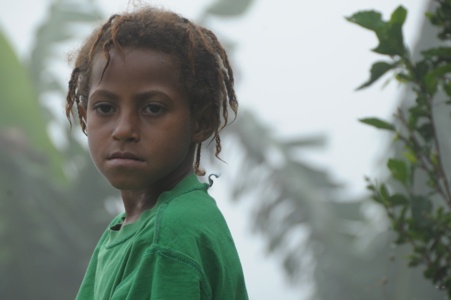
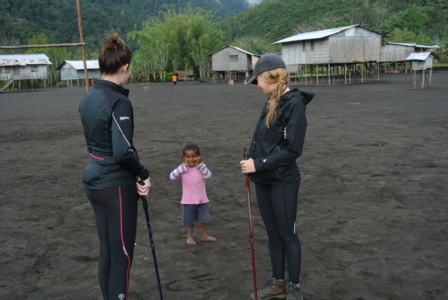
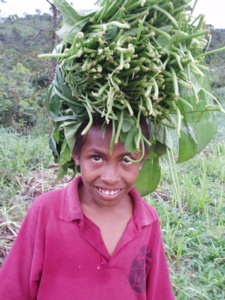
FAQs about this trek
Yes - Adventure Kokoda treks include International economy class return ticket to Port Moresby (for bookings ex-Cairns, Brisbane or Sydney), all accommodation, meals, transport, trek fees etc. The price also includes the provision of a roomy mosquito-proof tent.
If you engage a Personal Carrier, a backpack (75 Litre) is included; otherwise you can hire our backpack for $50.
You will find that some trek operators offer much cheaper treks - you need to check the small print to find out if there are any 'hidden extras' - which is often the case. If you have to pay for additional items or 'hidden extras' such as accommodation and meals in Port Moresby, airfares to/from Kokoda, personal camping equipment etc, then any saving on price can prove to be a false economy. Make sure you check the fine print with the tour operator you choose.
If you lead a sedentary lifestyle you will need a minimum of three months physical training and preparation.
You should start with a complete medical check-up then consult with your local gymnasium to prepare a personal training program aimed at increasing your aerobic fitness level. As a guide we recommend you start with minimum of 45 minutes of aerobic activity (walking, power-walking, jogging, cycling, tennis, etc) at least four times per week.
You should aim to increase your work rate by ten percent each week after that.
Your training needs to include extensive walking, preferably in a hilly-area, carrying a weighted pack. In the last month of your training you need to be capable of walking at least 10 km daily, carrying 3 to 5 kg more than the weight you expect to carry on your trek.
Think of your training as a deposit in your fitness account – everything you do between now and the trek will pay a dividend on the trail. If you haven’t made enough ‘deposits’ into your fitness account you will have to go into ‘debt’ on the trail – and debt of any kind is always painful!
You can’t cheat yourself on Kokoda – if you have done the work you will complete it OK – if you haven’t you will be a candidate for an emergency evacuation!
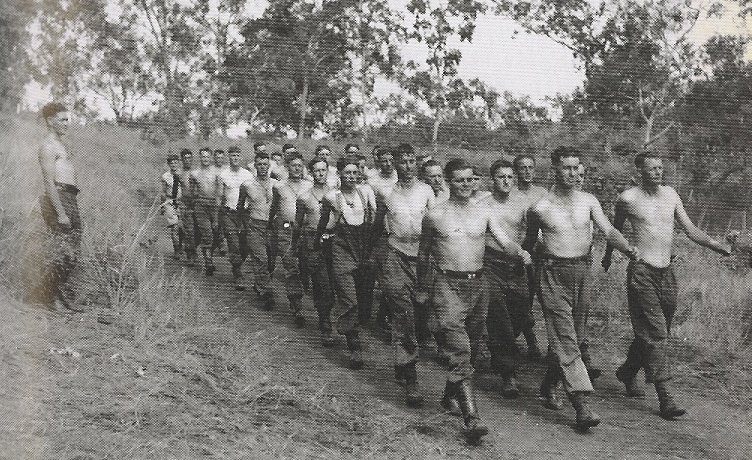
39th Battalion preparing for the Kokoda campaign on the Sogeri plateau in 1942
You should not have any worries if you are travelling with a reputable trek operator who utilizes a secure hotel and pre-arranged transport in Port Moresby.
Our trek leaders meet you on arrival at the Port Moresby airport; accompany you to your accommodation; provide detailed pre-trek briefings and equipment checks; lead you safely across the trail; and escort you back to the Port Moresby airport at the end of your trek. We are with you the entire time you are in PNG.
Our relationships with local villagers along the trail is based on mutual respect because of the employment we provide to their local Koiari and Orokaiva guides; the money we have invested into their local campsites; and the community benefits we provide through our not-for-profit company, Network Kokoda.
Each village has a designated area for trekkers to camp. They also have dedicated toilets for trekkers. Your guides will identify these areas for you.
There are also separate bathing areas for males and females. To avoid embarrassment you should ask your guides to show you where they are. Ladies should wear a sarong to their bathing area.
The VHF radio net along the Kokoda Trail has improved however there is only one channel and it is sometimes difficult to break into the chatter. The system does not have a base station with a 24/7 listening watch which could be critical in an emergency.
Adventure Kokoda are equipped with satellite phones for use in emergencies.
Operators who do not have a satellite phone with an active account fall into the 'dodgy' category - unfortunately they exist and the only protection trekkers have is the old caveat emptor of 'Let the buyer beware'.
Trekking without a satellite phone in your group is classified as 'unnecessary risk'.
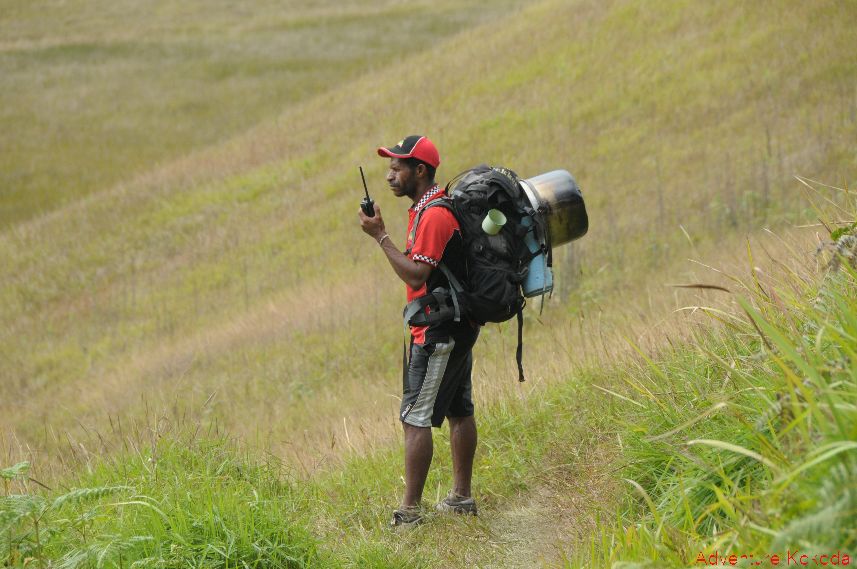
Meet the Trek Leaders
Major Charlie Lynn OAM OL - Director, Adventure Kokoda
In 2015 Charlie was inducted as an Officer of the Logohu by the Government of Papua New Guinea in their New Years Honours and Awards list 'for service to the bilateral relations between Papua New Guinea and Australia and especially in the development of the Kokoda Trail and its honoured place in the history of both nations' over the past 25 years.' More..
Tracie Watson - General Manager
Tracie is the General Manager and engine room of Adventure Kokoda - she is on-call 24/7 and will look after your every need and concern from the moment you book your trek until you arrive back in Australia. More..
Tau Maguli - Quartermaster
Tau Maguli is our PNG Quartermaster with an enormous task, he coordinates the allocation of 350 of our PNG guides and porters to ensure each trek has an equal number from each village across the Trail and each one gets at least six (6) treks a year. More..
Peter Morrison
Peter Morrison is an unassuming young Australian. He first trekked with Adventure Kokoda almost a decade ago and developed a strong desire to learn more about the campaign and the people he met along the trail. Peter is a professional boxer and former NSW Welterweight Champion. More..
Captain Reg Yates
Over the past 34 years Captain Reg Yates has explored most of the WW11 battlesites in PNG. He is fluent in Tok Pisin and is well respected by village elders along the Kokoda Trail. More..
Major Scott Babington
Scott joined the Australian Army as a 16 year old apprentice in 1985. He was promoted through the ranks and has spent over 34 years serving in the Australian Regular Army.
Scott has worked with the United Nations in Sudan as a Military Observer and as an Adviser in Afghanistan with the US 82nd Airborne and the 3rd Infantry Divisions. More..
Dave Sherry
Dave began exploring Australia as soon as he was old enough to escape Sydney. He was born in the city but his heart was in the bush and he now lives on a farm just outside the western country town of Horsham. There are few places in Australia that Dave hasn’t trekked on foot or explored in off-road vehicles. He even took to the sea as a crew member on the Tall Ship HMAS Bounty during the Bicentenary in 1988.
Dave first trekked Kokoda in 2006 and began leading expeditions across the trail in 2011. He has now led more than 35 groups across the trail. More..
Major Craig Moffat OAM
Craig joined the Australian Army in 1979 and was posted to the Royal Australian Infantry Corps where he has served for 40 years with over 20 years serving in Special Operations Command as a Commando.
Craig has seen regimental service as a soldier and officer rising through the ranks within The Royal Australian Regiment and Special Operations Command, his career culminated as soldier with two Regimental Sergeant Major (RSM) appointments prior to commissioning to officer in 2005. More..
Jake Leske
Australia’s Honey Bee. Former Navy sailor, Jake Leske, is more than an outstanding Kokoda trek leader, he is Australia’s original ‘Honey Bee’ and a remarkable endurance athlete. Jake first trekked with Adventure Kokoda to learn more about the Kokoda campaign. He returned as a volunteer 2IC and later led his first trek. More..
Warrant Officer James 'Max' Walker
James ‘Max’ Walker (first trek with Adventure Kokoda Aug 2018 – 2IC Apr 2024).
Max Walker is a former career soldier who first joined the Australian Regular Army as a young apprentice.
During his service, Max was posted to the United Nations in Cambodia and deployed to the Republic of Narau prior to the establishment of the Australian offshore immigration detention facility. More..
Angelo Tsirekas
Angelo first trekked Kokoda in 2010 and has since trekked it another 10 times with groups he has recruited from the Canada Bay Area. He has been 2IC to Charlie Lynn on his recent treks and has now stepped up to be a trek leader.
He is a former Board Member of the Kokoda Track Memorial Walkway in Concord and was instrumental in establishing the 'Rusty Priest Kokoda Scholarship Program' with students from Rosebank College.
Fiona Foster
Fiona has a strong passion for Kokoda, PNG and its people which was sparked as a young girl knowing her grandfather fought on Kokoda.
As a school teacher Fiona has extensive experience in developing leadership in young Australians and has been involved in the development of a leadership program within the school environment. This saw her bring two passions together; teaching our future generations and Kokoda, whilst getting them outside of their comfort zones, and allowing them to learn about themselves. More..
Carla Valmorbida
Carla brings great organisational skills, energy and humour to her role. She is passionate about the Kokoda campaign and thrives on seeing how transformative and life-changing this experience can be for trekkers.
Carla was initially inspired to trek Kokoda to honour her Grandfathers service with the AIF in Buna and has now successfully participated in a number of Adventure Kokoda Youth Leadership Challenge treks as a Trek Guide. More..
Bernie Rowell
Bernie is a Kokoda tragic. He first trekked with Kokoda to honour his father who served in New Guinea during the war. He has since trekked it 55 times. Bernie has transposed his success in business to his passion for leading treks across the Kokoda Trail. More..
Major Chad Sherrin MM
Chad is a decorated Vietnam veteran - he was awarded the Military Medal for bravery in action. Chad first joined the 8th Battalion, Royal Australian Regiment (8 RAR) as a tracking dog handler. He was promoted through the ranks to Sergeant while serving with 8 RAR and served with the Battalion in Malaysia and South Vietnam. More..
Lieutenant Colonel Rowan Tracey LLB BA
Rowan is a pioneer of the Kokoda Trail. He first trekked it 30 years ago when he served with the PNG Defence Force. He is fluent in the local language 'Tok Pisin'. Rowan is a military historian and is acknowledged as the most eminent authority on the strategy and tactics of the Kokoda campaign. More..
Commodore Simon Hart CSC MSc MA
Simon joined the Australian Navy a Cadet Midshipmen in 1973 and carved out an outstanding career spanning 33 years. He specialised in maritime surface ship operations and spent the majority of his career at sea. More..
Why Trek with Adventure Kokoda
Our primary goal is to lead you safely across the Kokoda Trail and ensure you have an unforgettable wartime historical and cultural experience.
Charlie has led 101 expeditions across the Kokoda Trail over the past 32 years.
He previously served in the Australian Army for 21 years. During this time he saw active service in Vietnam; was assigned to the joint Australian, New Zealand and British (ANZUK) Force in Singapore/ Malaysia from 1970-72, and as an exchange instructor in Airborne Logistics with the United States Army from 1977-78. He is a graduate of the Army Command and Staff College.
